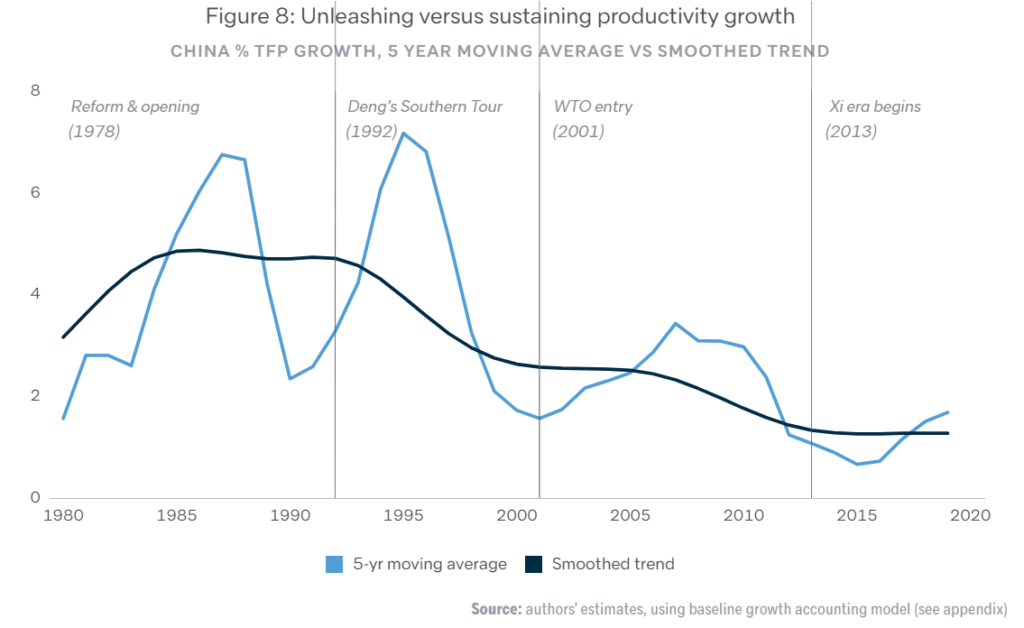Sunday, April 10, 2022
Five reasons China’s productivity slowed down
From Noahpinion:
“It’s always an interesting experience to read books about China’s economy from before 2018 or so. So many world-shaking events have changed the story since then — Trump’s trade war, Covid, Xi’s industrial crackdowns, the real estate bust, lockdowns, Russia’s invasion of Ukraine. Reading predictions of China’s evolution from before these events occurred is a little like reading sci-fi from 1962.
When I started China’s Economy: What Everyone Needs to Know®, by the veteran economic consultant Arthur Kroeber, I was prepared for this surreal effect. After all, it was published in April 2016 — not the most opportune timing. So I was pleasantly surprised by how relevant the book still felt. Most of the book’s explanations of aspects of the Chinese economy — fiscal federalism, urbanization and real estate construction, corruption, Chinese firms’ position within the supply chain, etc. — are either still highly relevant, or provide important explanations of what Xi’s policies were reacting against. Dan Wang was not wrong to recommend that I read it.
But China’s Economy is still a book from 2016, and through it all runs a strain of stubborn optimism that seems a lot less justifiable six years later. Most crucially, while Kroeber acknowledged many of China’s economic challenges — an unsustainable pace of real estate construction, low efficiency of capital, an imbalance between investment and consumption, and so on — he argued that China would eventually overcome these challenges by shifting from an extensive growth model based on resource mobilization to one based on greater efficiency and productivity improvements. This was despite his acknowledgement of the fact that productivity growth had already slowed well before 2016, and that Xi’s policies so far didn’t seem up to the challenge of reviving it.
In many ways, productivity growth is the thread that ties together the entire story of the Chinese economy since 2008. Basic economic theory says that eventually the growth benefits of capital accumulation hit a wall, and you have to improve technology and/or efficiency to keep growth going. Some countries, like Japan, South Korea, Singapore, and Taiwan, have done this successfully, and are now rich; other, like Thailand, failed to do it and are now languishing at the middle income level. For several decades, Chinese productivity growth looked like Japan’s or Korea’s did. But slightly before Xi came to power, it downshifted to look a bit more like Thailand. Here’s a graph from the Lowy Institute’s recent report:”

Posted by at 7:58 AM
Labels: Macro Demystified
Subscribe to: Posts